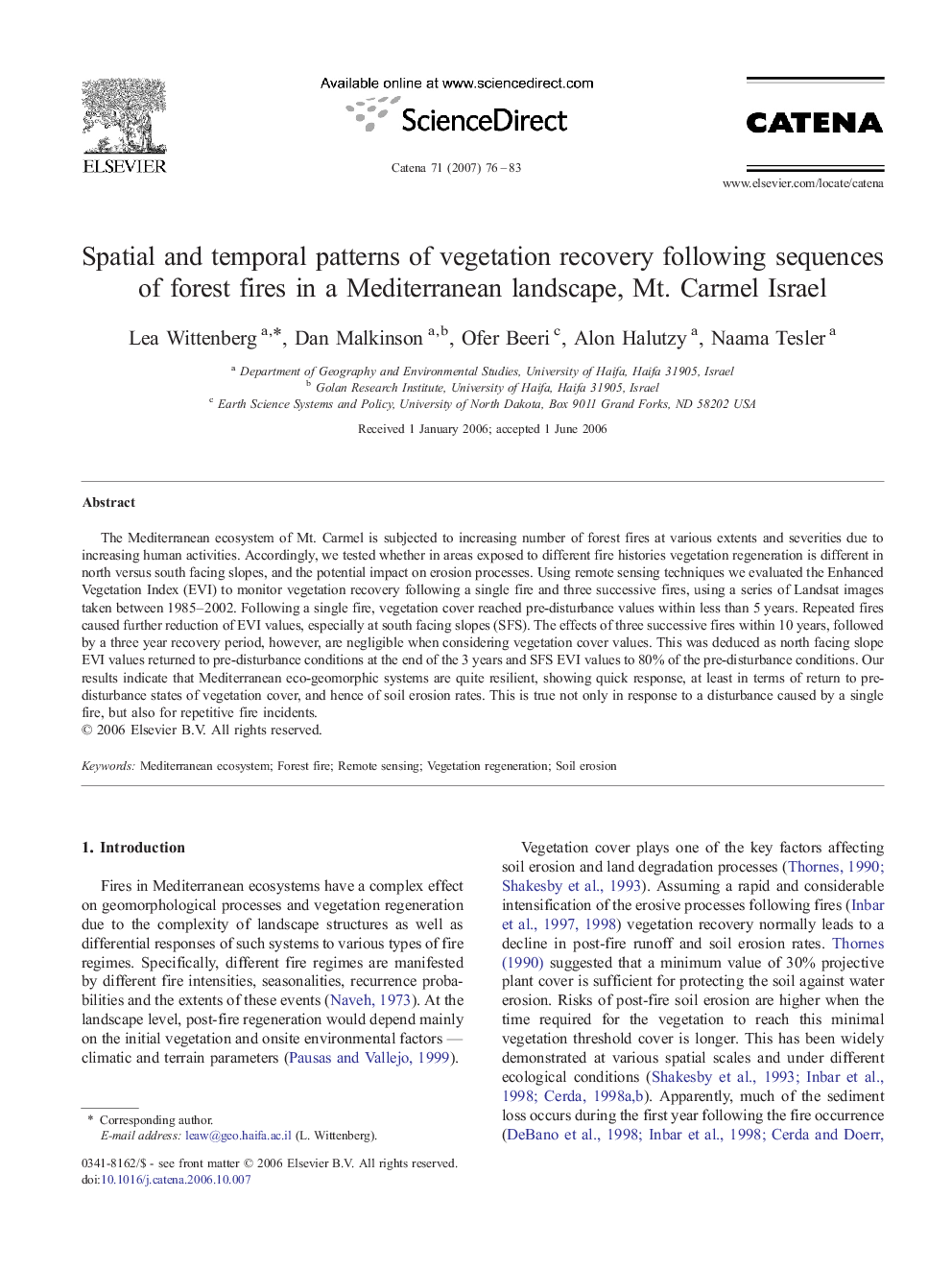| Article ID | Journal | Published Year | Pages | File Type |
|---|---|---|---|---|
| 4572609 | CATENA | 2007 | 8 Pages |
The Mediterranean ecosystem of Mt. Carmel is subjected to increasing number of forest fires at various extents and severities due to increasing human activities. Accordingly, we tested whether in areas exposed to different fire histories vegetation regeneration is different in north versus south facing slopes, and the potential impact on erosion processes. Using remote sensing techniques we evaluated the Enhanced Vegetation Index (EVI) to monitor vegetation recovery following a single fire and three successive fires, using a series of Landsat images taken between 1985–2002. Following a single fire, vegetation cover reached pre-disturbance values within less than 5 years. Repeated fires caused further reduction of EVI values, especially at south facing slopes (SFS). The effects of three successive fires within 10 years, followed by a three year recovery period, however, are negligible when considering vegetation cover values. This was deduced as north facing slope EVI values returned to pre-disturbance conditions at the end of the 3 years and SFS EVI values to 80% of the pre-disturbance conditions. Our results indicate that Mediterranean eco-geomorphic systems are quite resilient, showing quick response, at least in terms of return to pre-disturbance states of vegetation cover, and hence of soil erosion rates. This is true not only in response to a disturbance caused by a single fire, but also for repetitive fire incidents.
